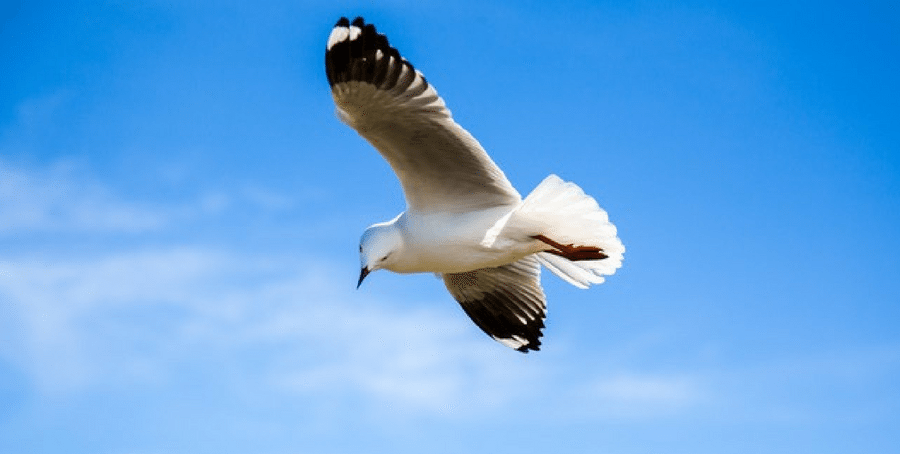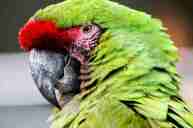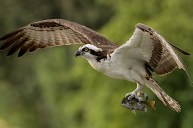Airplanes were modeled after birds for a reason.
Experts in the sky, birds mastered the art of flying long before humans. And they did it with just their feathers and bones.
Every aspect of a bird, from head to toe and inside out, evolved to aid in aerodynamics. Avians master four major concepts of flight in order to flap their wings overhead: weight, lift, thrust, and drag.

Weight
For starters, hollow bones make birds literally light as a feather. The heavier something is the more energy it takes to maintain in flight. But nothing is weightless, and so gravity is still working against lightweight birds in the sky.
Lift
Lift counters gravity, but must be generated strong enough to combat weight. This is where wing flapping comes in, forcing wind to glide over the interlocking barbules of a feather.
Birds can decrease the amount of lift exerted by reshaping their wings into a downward V, called a negative dihedral. When both wings are pointed upward in a V, this is referred to as a positive dihedral. A negative dihedral will allow a bird to return to the ground.
Thermal lift is effectively called soaring. Birds take advantage of these pockets of warm air based on the principle that heat rises.

Thrust
Forward motion—think long jumping--is called thrust. Birds accomplish this by pushing their wings not upward, but backward. Thrust fights drag, the force working against it to bring something in flight back down to earth.
Drag
Everything in motion meets with friction, even in the air. Drag is the result of friction. The aerodynamic streamline shape of a bird and plane decreases the amount of drag.
While the physics of flight can get much more complicated, these are the basic tenets of how an animal defies gravity and friction.
Feathers, too, aren't just pretty to look at. They serve a purpose from flight to mating to camouflage and insulation.
Let's take a closer look at bird wings and wing shape!
Bird wings: 5 major types
According to Wildernessawareness.org,
1) High-speed bird wings, common to bird species like swifts, swallows, falcons, shorebirds, and ducks are built for speed, but require a lot of work to keep the bird airborne.
2) The long and cumbersome, high-aspect-ratio bird wings of albatrosses, petrels and gulls may not get them into the air quickly or easily, but these wings are perfectly designed for soaring long distances with little effort.
3) In contrast, the short rounded elliptical game bird wings of a grouse, turkey, pheasant or quail can get them off the ground in a heartbeat, but the energy that it takes to lift that heavy body off the ground doesn't last long. Have you ever watched a chicken take-off? If you live with chickens look at your bird's wings, the top of the wing, and check out their flight muscles. These large birds are fascinating to watch when they're using their flight feathers.
4) The slotted, high-lift wing of hawks, eagles, swans and geese provides the extra lift that is needed to keep their large bodies airborne or to carry heavy prey. These birds fly well carrying their prey including mice, rabbits and moles.
5) And finally, the shape of the wing, the classic elliptical wing of your local passerine allows for the quick bursts of flight and high maneuverability that is perfectly suited for life in brushy habitats. The bird flight for these birds is very different than the other flying birds!
This provides more perspective about avian flight and who not only the bird's body but the primary feathers, wing area, and tail feathers all play a major role in how certain birds fly. Larger birds vs. small birds fly very differently.
The next time you see a bird in flight you'll look at their flapping wings a lot differently.
Did you learn something new about birds? What other avian questions can we answer? Tell us in the comments below!
WATCH NOW: Groups of Animals Quiz




